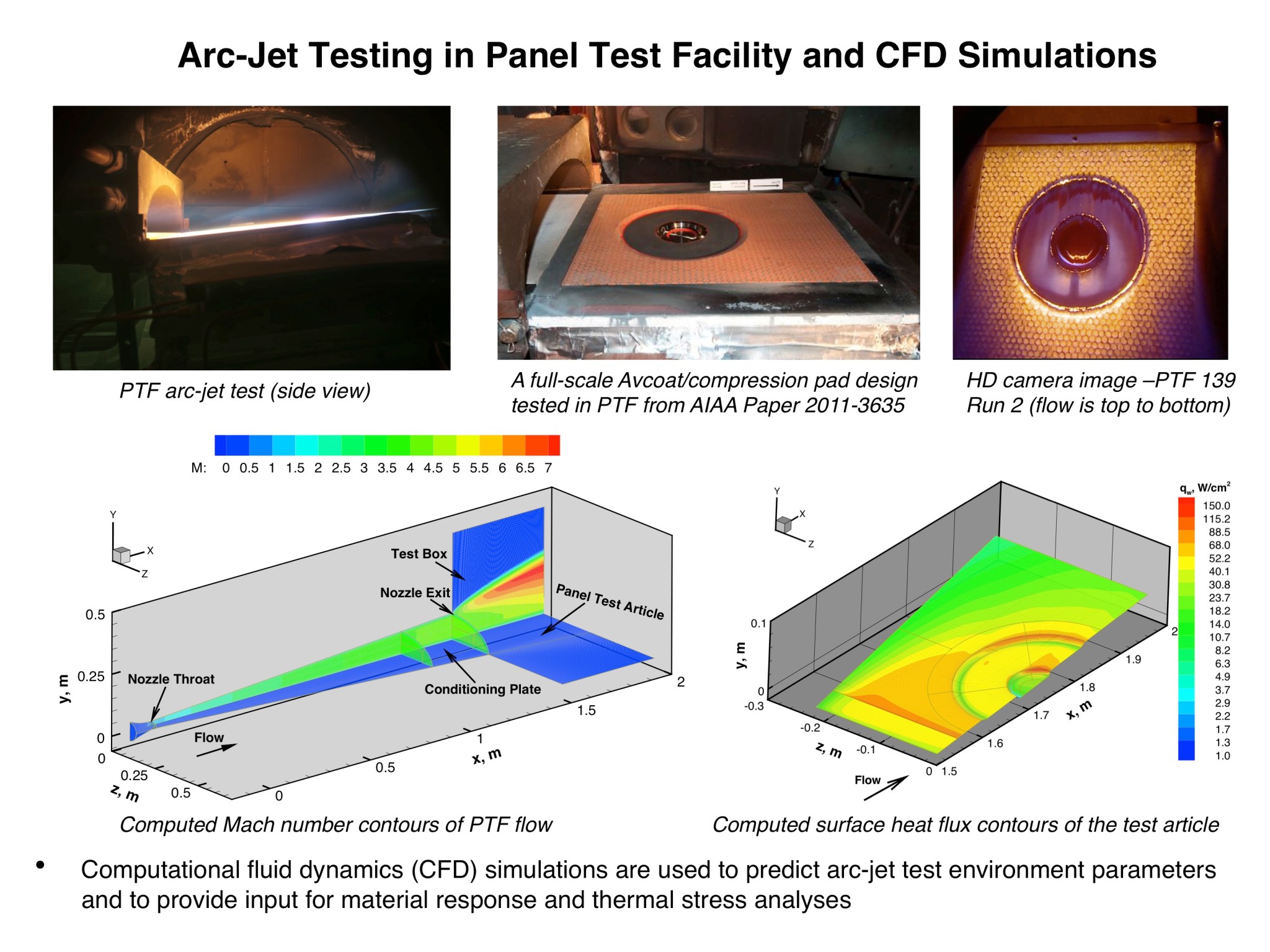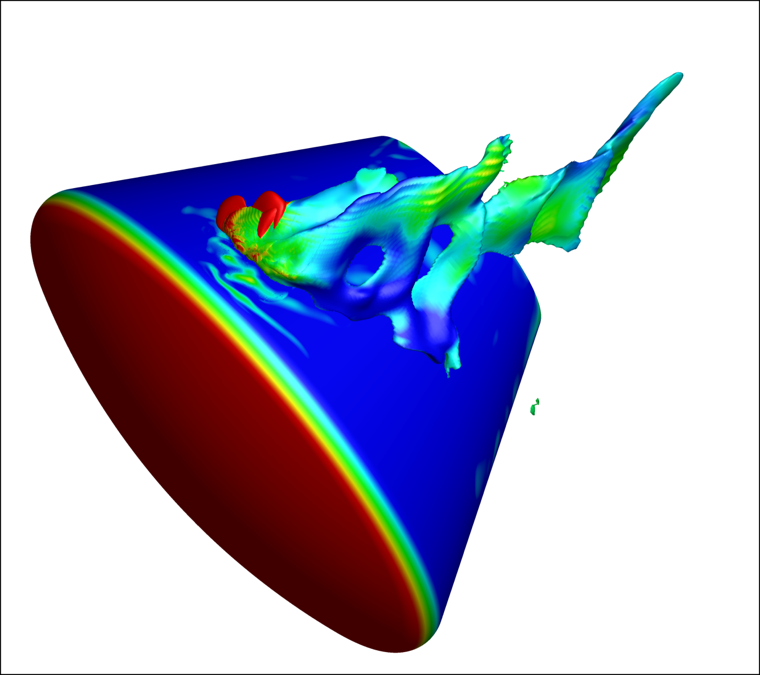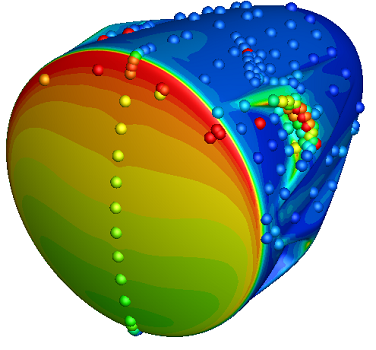The Human Exploration and Operations Mission Directorate provides the Agency with leadership and management of NASA space operations related to human exploration in and beyond low-Earth orbit.
Orion TPS Insight/Oversight
Orion’s Avcoat epoxy novolac resin heat shield is the largest ablative heat shield ever made. Composed of approximately 180 blocks, this new heat shield protects the conical Crew Module from re-entry temperatures as high as 2,200 degrees Celsius (4,000 degrees Fahrenheit). Computation Fluid Dynamics (CFD) simulations are performed to characterize test environment parameters for Orion Thermal Protection System (TPS) arc jet tests.
Orion Multi-Purpose Crew Vehicle Aerosciences
The Aerothermodynamics Branch performs aerothermal analysis for the Orion Crew Module (CM) and Launch Abort System (LAS). Computation Fluid Dynamics (CFD) and radiative heating solutions are used to size the Avcoat Thermal Protection System (TPS) for the forebody heat shield and the tile TPS for the back shell. In addition, CFD and engineering methodologies are used to develop aeroheating models for the CM compression pads, CM Reaction Control System (RCS) jets, CM back shell penetrations and protuberances in both the attached and separated flow regions, LAS Abort Motor (AM) plumes, and LAS Attitude Control Motor (ACM) plumes. The CFD results are validated using data from wind tunnel tests on the Orion configuration.
Commercial Crew Program Entry Aerothermal Independent Assessment
Independent analysis is conducted of Commercial Partner’s entry aerothermal designs to gain insight into design and analysis assumptions to gain confidence for vehicle certification for crewed flight. Independent CFD solutions for both SpaceX and Boeing are compiled to build independent entry aerothermal environments databases. The effort also includes investigating local heating effects, such as the areas around RCS nozzles.

























